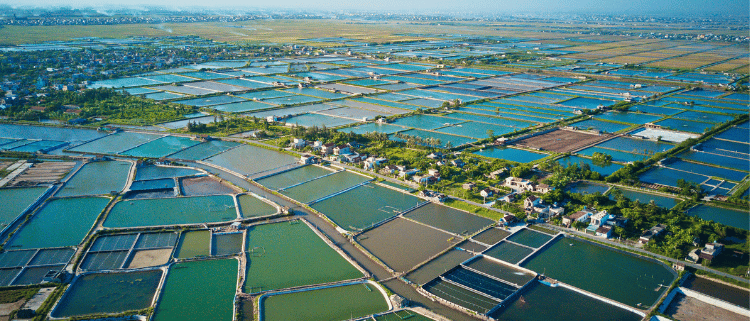Benefits of Pichia guilliermandii in shrimp feeds
Research and benefits of Pichia guilliermandii in shrimp feeds
By François Jégou, Sarah Cooper and Delphine Weissman, ADM Animal Nutrition, published in Hatchery International, August 2022
Functional feeds offer synergistic opportunities to reduce the effects of adverse situations, environmental conditions, or potential disease – such as Acute Hepatopancreatic Necrosis Disease (AHPND), also known as Early Mortality Syndrome (EMS), or White Spot Syndrome Virus (WSSV) disease.
Recent ADM studies have demonstrated how Pichia guilliermondii (PG) inactivated yeast is leveraged in aqua feeds and used to alleviate disease stress through a modulating effect on gut microbiota and immune functions.
Cardozo et al. 2018 compared in vitro bacterial aggregation capacity of inactivated PG and Saccharomyces cerevisiae (Sc), with Mannose as the positive control. PG demonstrated twice the aggregation capacity at all commercial dosages compared to that of Sc. Pathogen aggregation is critical in innate immunity and homeostasis.
To assess the bacterial aggregation cap- acity of PG in vivo, we conducted a bacterial clearance study where Litopenaeus vannamei shrimp were injected with Vibrio harveyi. After three hours, the concentration of V. harveyi was more than three times lower compared to the control-fed shrimp. The study also showed that granular hemocyte blood cell concentration in hemolymph was 56 per cent higher after four weeks in PG fed shrimp compared to the control.
In order to confirm these results and the potential benefit of PG in shrimp culture, two separate disease studies were performed. These showed that survival of Litopenaeus vannamei five weeks after either Vibrio parahaemolyticus or white spot syndrome virus challenge was increased by 76 per cent and 84 per cent respectively, com- pared to control without PG inclusion. In a field condition test without any specific pathogenic challenge, vannamei shrimp fed supplemented diets showed a significant 10 per cent increase in growth performance compared to a control diet at the end of a seven-week trial.
Additional studies also show that PG yeast has the potential to further support other aquatic organisms with adaptive immune functions, opening opportunities for ADM to develop formulations for fish as well.
For the aquaculture industry, science and evaluations definitely help determine how functional feeds affect the health and performance of the animals, thus creating optimal technical and economic results for farmers. Incorporating functional feed additives like Pichia guilliermondii yeast as early as possible into aquaculture feeds offers unique traits for use in shrimp cultures and daily management, improving growth while significantly helping the shrimp to better cope with constant physiological and disease stress.
Find out more about how we help to improve aquafeeds for sustainability, human nutrition and fish well-being.



